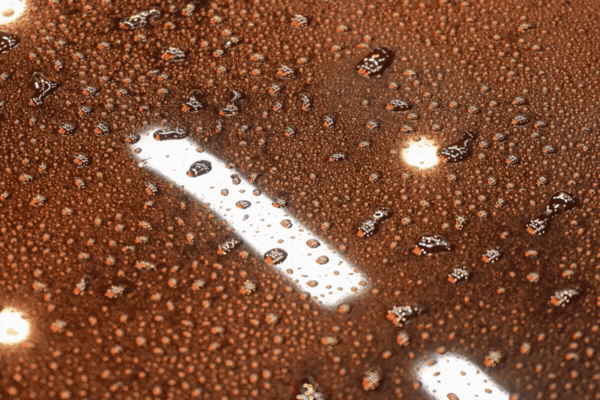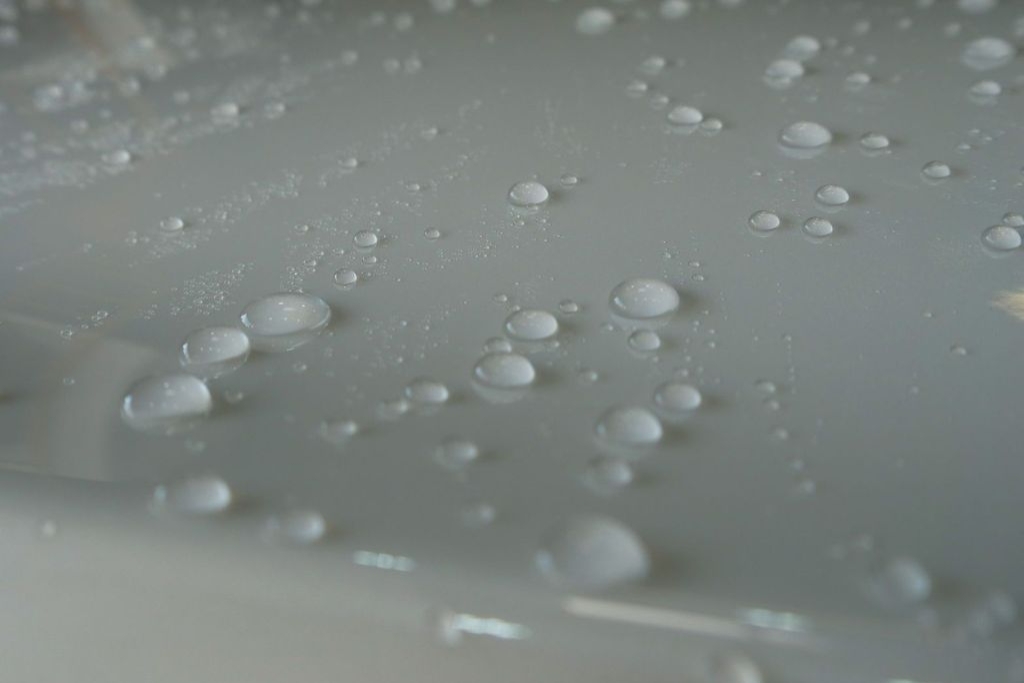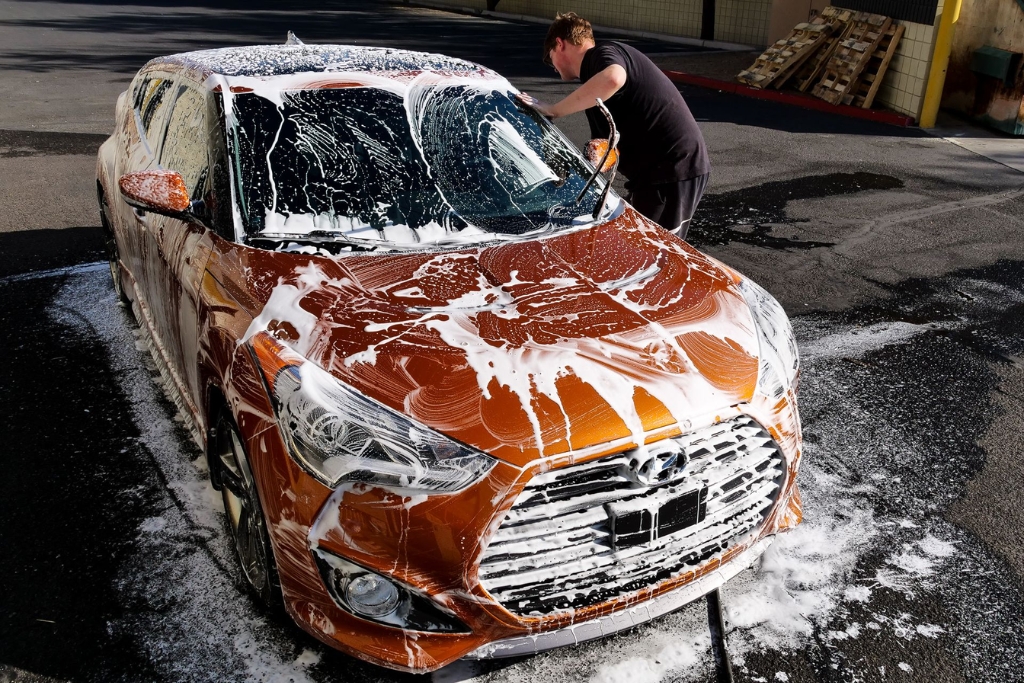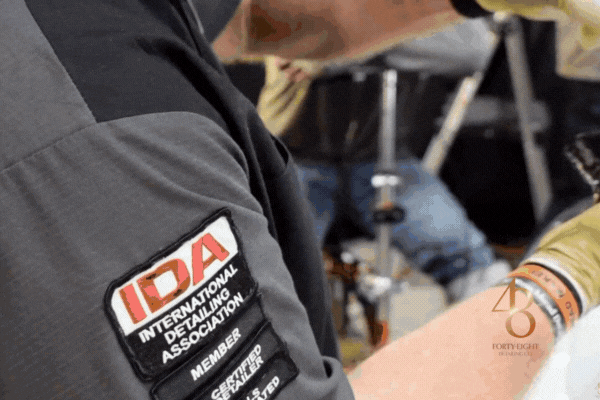Water spots, those frustrating, chalky blemishes that show up after a rainstorm or car wash, are every car owner’s pet peeve. If you’ve invested in a ceramic coating, you might be wondering: Does ceramic coating prevent water spots? The short answer? Not entirely. But ceramic coatings significantly reduce their impact and make them far easier to manage.
In this guide, we’ll break down how ceramic coatings work, why water spots still happen, and what drivers in Surprise, Arizona, can do to keep their vehicles looking spotless. We’ll also offer expert tips and maintenance insights straight from the pros at 48 Detailing, Surprise’s top destination for paint protection.
How Water Spots Form, And Why They're Such a Problem

What Exactly Are Water Spots?
Water spots are stubborn mineral deposits, typically composed of calcium, magnesium, or other dissolved solids, that are left behind when water evaporates. These spots are most common after:
- Hard tap water usage during washing
- Rainwater that mixes with dust, pollen, or air pollutants
- Sprinkler overspray, often containing treated or reclaimed water
- Improper drying, especially in direct sunlight or windy conditions
As the water dries, these minerals are left behind on the surface. Over time, if not removed, they can bond tightly to your paint, especially under the intense, dry heat of Arizona, leading to more than just surface blemishes.
Why They’re Tough on Your Paint
Water spots aren’t just unsightly; they can be surprisingly damaging:
- Etching: If the minerals remain in contact for a prolonged period, they begin to eat into your vehicle’s clear coat, forming permanent impressions.
- Oxidation and Surface Degradation: Water spots can trap contaminants, accelerating surface wear and fading.
- Visual Impact: Even light spots dull your vehicle’s gloss and depth, particularly noticeable on darker paint.
Once etching occurs, standard washing won’t fix it; only professional polishing or paint correction can restore the finish. That’s why prevention and quick action are so important.
What Ceramic Coating Actually Does for Water Spots

The Hydrophobic Shield: How It Works
Ceramic coatings are advanced SiO₂-based nanotechnology treatments that chemically bond to your vehicle’s paint, forming a durable, ultra-slick, and non-porous barrier. At 48 Detailing, we apply professional-grade ceramic coatings that not only enhance shine but also offer vital protection against environmental damage, including water spots.
Here’s how ceramic coatings provide water spot resistance:
- Hydrophobicity: The coating creates a high-contact-angle surface, meaning water beads up into tight droplets and rolls off more easily, reducing pooling.
- Barrier Against Etching: It acts as a sacrificial layer, preventing mineral-laden water from directly interacting with your paint or clear coat.
- Easy Cleaning: Because the surface is slick and resistant to bonding, mineral deposits, dirt, and other contaminants are easier to wipe off before they can cause lasting damage.
These benefits are especially helpful in places like Surprise, AZ, where high heat and hard water make vehicles more vulnerable to spotting.
But Here’s the Catch: Coatings Don’t Make You Immune
Even top-tier ceramic coatings aren’t invincible. Water spots can still form if proper care isn’t taken. Here’s why:
- Air-Dried Water: If water is left to dry on the surface, particularly in direct sunlight, minerals will remain behind.
- Hard Water: Tap water with high TDS (Total Dissolved Solids) levels can overpower the coating’s hydrophobic properties, especially on flat or horizontal panels.
- Coating Degradation: Over time, exposure to UV rays, chemicals, and abrasive washing can reduce the coating’s effectiveness if it is not properly maintained.
- Environmental Contaminants: Rain may be gentle, but when combined with pollutants, dust, or tree sap, it can still leave marks, especially after a storm is followed by sunny weather.
So, Does Rain Leave Water Spots on Ceramic-Coated Cars?
Yes, it can, particularly when rain carries airborne contaminants or is followed by rapid drying. While ceramic coatings reduce how much it sticks and how hard it is to clean, they don’t eliminate spotting altogether.
That’s why combining a quality coating with smart maintenance practices is essential to keeping your car looking its best.
The Role of Water Hardness in Spot Formation

Why Arizona Drivers Should Pay Attention
In areas like Surprise, Arizona, municipal water supplies often test as moderately to very hard, meaning they contain elevated levels of calcium, magnesium, and other dissolved minerals. When this hard water is used to wash your car, or worse, left to dry in the sun, it leaves behind unsightly mineral residue that becomes visible as water spots.
Sprinkler systems are also a common culprit. Many use reclaimed or untreated water, which is often loaded with minerals. Even a few minutes of overspray can lead to stubborn spotting or permanent etching, especially on a hot day.
Pro Tip: Use a Spot-Free Rinse
One of the most effective ways to counteract this is by utilizing a deionized (DI) water system. These systems remove the minerals responsible for spotting, allowing water to dry without leaving behind residue. Many professional detailers and premium car washes in Arizona already use DI water for this reason.
If you’re washing your vehicle at home, consider:
- Adding a portable DI filter to your hose setup
- Investing in a spot-free rinse system
- Doing your final rinse with distilled or filtered water
These small upgrades can dramatically reduce water spotting, even when combined with a ceramic coating, and help maintain your vehicle’s shine between washes.
How to Prevent Water Spots, Even With a Coating
Even with a ceramic coating, preventing water spots requires a proactive care routine, especially in Arizona’s sun-drenched, mineral-rich environment.

1. Dry Immediately and Properly
Letting water air-dry is the fastest way to develop water spots, especially on dark-colored vehicles. Right after washing or exposure to rain:
- Use clean, plush microfiber towels for a streak-free finish
- Opt for a touchless car dryer or leaf blower to reach tight crevices and prevent drips later
- Apply a ceramic-safe detail spray while drying to boost slickness and renew the coating’s hydrophobic layer
Even after a light rain, it’s a good habit to wipe down the car, if possible, especially on horizontal surfaces like hoods and roofs.
2. Wash Smart and Use the Right Tools
The quality of your wash routine makes a huge difference:
- Always use pH-neutral, ceramic-safe shampoos to avoid breaking down the coating
- Use the two-bucket method to reduce swirl marks
- Rinse thoroughly, especially under panels and around trim
- Avoid vinegar or acidic cleaners unless directed by a professional; they can degrade the coating over time
For added protection, finish with a spot-free rinse if using tap water.
3. Maintain the Coating
Ceramic coatings are durable, but they require upkeep to stay effective:
- Apply topper sprays or maintenance boosters every 2–3 months to refresh hydrophobicity
- Watch how water behaves: a tight bead indicates strong protection; flat sheeting may signal it’s time for maintenance
- Plan a professional inspection or reapplication annually, especially in harsh climates like Arizona
➡️ Want to keep your coating performing at its best?
Check out our blog: How Often Should You Recoat Ceramic Coatings?
When Should You Recoat for Maximum Spot Resistance?
Even the best ceramic coatings need occasional upkeep to maintain optimal water spot resistance. At 48 Detailing, we recommend assessing your coating’s performance every 12 to 18 months, depending on your vehicle’s exposure to sun, water, and road contaminants.

Here’s a quick guide based on our professional ceramic coating packages:
- Bronze (1+ Years): Perfect for lightly driven or garage-kept vehicles. Great entry-level protection.
- Silver (3+ Years): Our most popular choice for Arizona drivers, ideal for daily drivers exposed to Surprise’s intense sun and hard water.
- Gold (5+ Years): Ultimate protection, gloss, and long-term resistance to water spotting, UV damage, and environmental fallout.
Signs it’s time to recoat or refresh include diminished water beading, dull shine, or increased difficulty removing contaminants.
At 48 Detailing, we don’t just apply coatings; we craft tailored protection plans that suit your specific needs. Our team uses only premium-grade products, expert prep, and precision techniques to ensure long-lasting results. Whether you’re coating a new ride or restoring an older vehicle, we’ll help you maintain that just-detailed look year after year.
👉 Ready to protect your vehicle the right way?
Explore Our Ceramic Coating Packages or contact us for a free assessment.
Final Thoughts: Is a Ceramic Coating Worth It for Preventing Water Spots?
Is a Ceramic Coating Worth It for Preventing Water Spots?
If you live in Surprise, AZ, where heat and hard water are the norm, ceramic coatings offer major advantages. While they won’t make your vehicle water-spot proof, they:
- Create a hydrophobic, chemical-resistant shield
- Make spotting less severe and easier to clean
- Help prevent etching, oxidation, and paint degradation
Still, it’s up to you to follow the correct washing and drying habits. And when you’re ready for expert-level protection, 48 Detailing is here with the best ceramic coating solutions in Arizona.
Get Protected Today
At 48 Detailing, we deliver ceramic coatings that work and last. Whether you’re protecting a daily driver or a luxury vehicle, we’ve got a package to match your needs and driving conditions.
👉 Explore our Ceramic Coating Packages
📞 Or call us at (623) 400-8880 to book your spot!
FAQ:
Why Do Water Spots Still Appear?
Minerals remain if the water dries on the surface. Ceramic coatings slow the damage, but don’t prevent deposits from forming.
What Can I Use to Remove Water Spots?
- Try ceramic-safe water spot removers.1
- Mild detailing clay
- Avoid vinegar or strong acids, which can degrade the coating
Are There Coatings That Fully Prevent Spots?
No coating completely prevents water spots. The key is combining a suitable coating, regular maintenance, and effective washing techniques.


